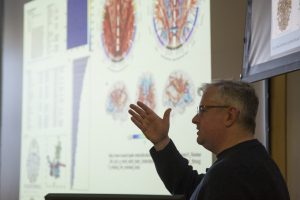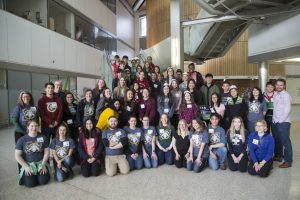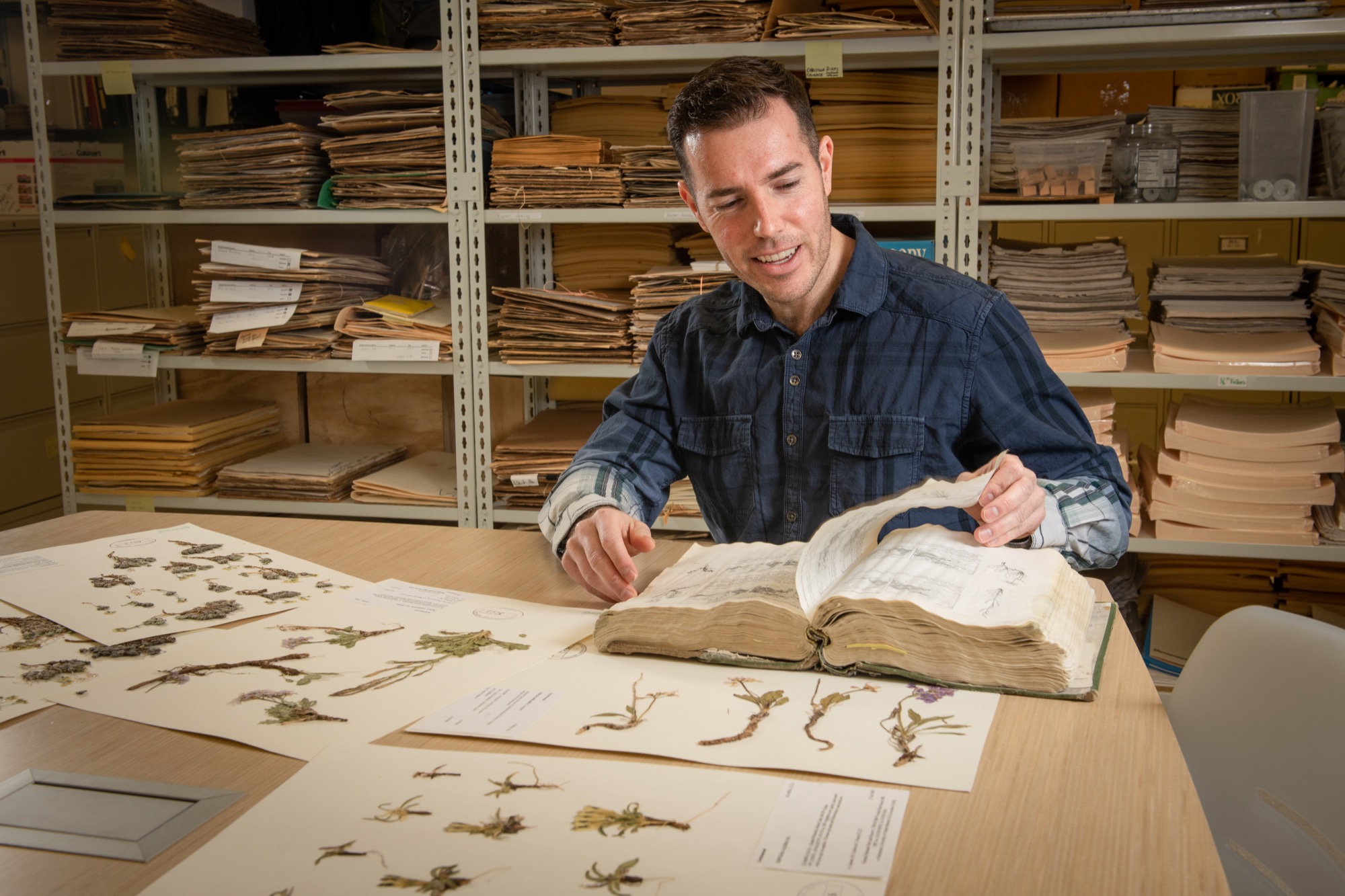Busy bee: UAA hosts Brain Bee to inspire neuroscience education
by Catalina Myers |
The human brain contains almost 100 billion nerve cells, or neurons, which is about as many stars in the Milky Way. Turns out, one of the most amazing, complex and perplexing systems is the one inside our heads. The human brain is complicated and one of the most researched, but is also a part of the human body that continually stumps scientists. Which is why the Brain Bee, an international neuroscience competition for high schoolers, aims to encourage exploration and education to inspire youth to pursue neuroscience careers.
Alaska's Brain Bee chapter is housed in UAA's Department of Biological Sciences. This year's regional event was held Saturday, Feb. 2, in the ConocoPhillips Integrated Science Building (CPISB), and hosted 30 students from across Southcentral Alaska.

Braining out
In 2010, former assistant professor of math and natural sciences Caroline Wilson brought the Brain Bee to UAA, which was also the first year it was held.
So what exactly is a Brain Bee? Not to be confused with the Spelling Bee, about the only similarity is that it's a national and international competition event for high school students. The Brain Bee is all about neuroscience and encouraging youth to learn about the brain, its processes and functions, as well as the diseases and issues that plague the human brain. At the regional level, students compete in question-and-answer format, while on the national competition, an additional hands-on laboratory aspect may be added to the competition. Regional Brain Bee winners move on to the national competition held in Maryland.
Rachael Hannah, assistant professor in the Department of Biological Sciences, recently took over UAA's Brain Bee event and has had a lot of experience with the competition, starting regional Brain Bee events in Vermont when she was finishing her postdoctoral work, and also in Maine, in collaboration with faculty at the university she was working at. She said between 2008 and 2010 is when regional Brain Bee events started gaining popularity across the country, although the international competition has existed since the late '90s.
In years past, the state's regional Brain Bee was held at the Anchorage Museum, but it was decided to bring the event back to campus this year - which is exciting because there was an opportunity to add some fun laboratory elements to the competition. Additionally, Hannah has expanded the Brain Bee on campus, inviting participation from other faculty members focused on neuroscience, as well as bringing on board two Community Engaged Student Assistants (CESA).
"We've built a lot of camaraderie around the event and it's been a lot of fun," said Hannah. "There's a lot of people who are putting a lot of energy into this."

Hannah said this year's event focused on traumatic brain injury, and the group brought in guest lecturer Dr. Gerald York, neuroradiologist and director of Traumatic Brain Injury and Research for Alaska Radiology Associates and Imaging Associates.
Hannah said normally Brain Bee events do not have themes, but with recent research coming out about repetitive concussions in youth, she thought it was a relevant topic. Going forward, she'd like to have thematic topics to focus on for guest speakers and event activities in addition to the competitive quiz portion of the day.
"We try to make this event where students can see and meet their peers and other people who enjoy thinking about the brain and build that community of thinking and learning," Hannah said of the event.
The bee
For the first half of the day, the high schoolers participated in activity stations, rotating every 20 minutes, and then enjoyed lunch and the guest speaker. After lunch is when the real bee begins. The students start off with a fun warm-up round with Jeopardy-style questions before moving on to a paper and pencil quiz. They then move into the "short answer" portion, where they have 30 seconds to scribble their answers on a whiteboard from a PowerPoint. During the "whiteboard" rounds, only the top five students advance before a winner and runner up are chosen.

"We try to be as inclusive as possible for as long as possible," said Hannah, explaining that unlike the Spelling Bee, this is a much more relaxed and fun event where the focus is more on education and sparking curiosity for students to learn and discover more about the brain.
"It was such an amazing opportunity," said Jessica Reisinger, a sophomore majoring in chemistry and minoring in psychology, who participated in the event as a high schooler and is now one of Hannah's CESA students helping with the event. She remembers seeing a poster in the hallway at her high school, Googled the event, decided it was right up her alley and signed up for the event. "There's just so much diversity and so much to learn about the brain. There's just so much that we still don't know, and that, you know, everything we do know comes from the brain."
Reisinger actually won the Alaska Brain Bee regional competition the year she signed up in high school and competed in the national competition. Her senior year of high school, Wilson, who was passing the torch to Hannah, connected the two, and Reisinger was more than happy to continue her involvement with Brain Bee.
"My work for Brain Bee really focuses around promotion and getting students excited for the event," said Reisinger. For her, this is really important because she credits the Brain Bee for launching her interest and career into the sciences. "It's how I met Rachael, and she's become such a great research mentor for me — I work in her lab now. It's an opportunity I never would have had if it hadn't been for Brain Bee."
And that's exactly what Hannah and her colleagues hope the UAA Brain Bee event accomplishes: opening the door to the sciences for high school students and igniting curiosity into learning a little bit more about one of the bodies more puzzling pieces.
"For me, the Brain Bee really opened the door to making my college experience what it is so far," Reisinger said.
Written by Catalina Myers, UAA Office of University Advancement
 "Busy bee: UAA hosts Brain Bee to inspire neuroscience education" is licensed under a Creative Commons Attribution-NonCommercial 4.0 International License.
"Busy bee: UAA hosts Brain Bee to inspire neuroscience education" is licensed under a Creative Commons Attribution-NonCommercial 4.0 International License.














